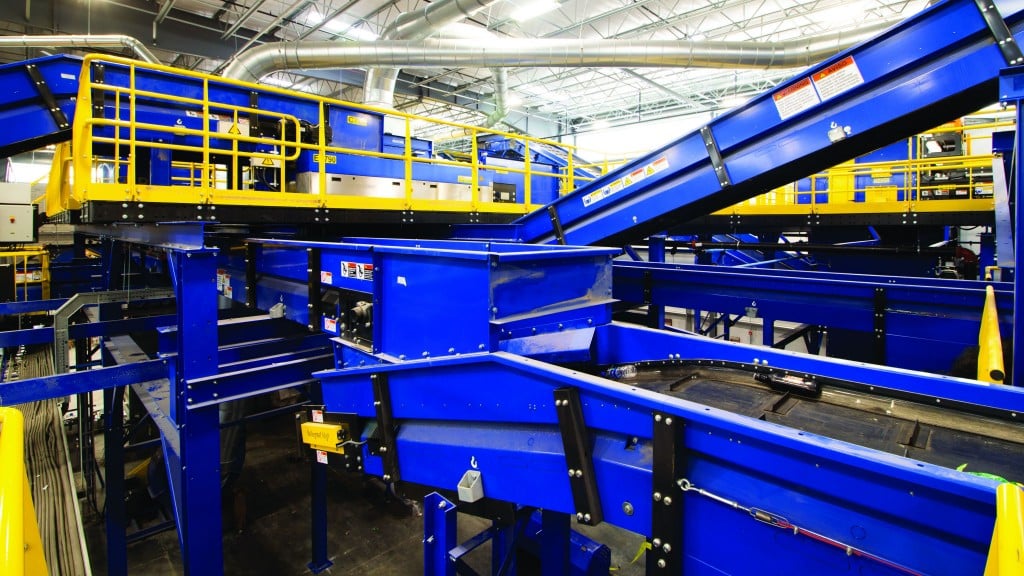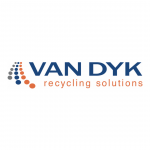
Automation. Artificial intelligence. Robots. Whatever new technology a MRF may be in the market for, there are multiple factors to consider.
At Van Dyk Recycling Solutions we visit MRF operations all over the U.S. and Canada. We see first-hand the challenges these sites face, such as highly-contaminated inbound material streams and inbound stream changes due to various factors, ranging from light-weighting, the Amazon effect, reduction of ONP, increase of film and trash, to high maintenance costs and increasing end product quality demands. There are also challenges with respect to maintaining a safe working environment and manual sorting labour issues - like finding willing candidates to show up every day and dedicate themselves to sorting through trash.
Whatever technology is being considered - and there are some really cool systems out there (robots, optical sorters, material monitoring cameras) material needs to be properly prepared first for it to be properly recognized, sorted or monitored. Any separation device - a screen, an optical sorter or a robot - likes to be fed a steady diet of consistent material, on a single layer of the conveyor. If possible, material should be consistent by size with fines removed, and similar by shape, rigidity and density.
The following are five ways to help prepare material so that MRF operations can get the most out of their intelligent optical sorter or robot.
1. Screen for size - without getting wrapped up
Mechanical screens remain an important piece of the puzzle at a MRF to help separate material into different fraction sizes, preparing material for further sorting or intelligent separation. Large fractions and fines can be removed and a target size can be directed to an intelligent separation device such as an optical sorter or robot. In the last few years screens have been greatly improved. Van Dyk and many other suppliers now offer non-wrapping screens that properly size material without allowing film bags to be wrapped around their shafts.
2. Separate 2D from 3D - the importance of ballistic or elliptical separators
An elliptical or ballistic separator performs highly accurate separation of 2D and 3D materials. Paddles "walk" 2-dimensional objects (such as film bags and light sheet paper) over the screen. Items with rigidity (bottles, cans, 3D cardboard) bounce backward. Also, the paddles have true two-inch holes in them to allow the last bit of glass fines to fall through. With minimal maintenance and no star changing required, the elliptical separator has clearly become the best choice for final clean up at the MRF, whereas more traditionally a commingled or polishing screen would be used. With the ability to remove light sheet paper, film and fines, the elliptical screen is becoming a must have to properly prepare a container line for further processing (whether using optical sorters, robots or human pickers).
Conveyor belts - how they play a part
Conveyor belts and sequencing play a large role in the success of any intelligent separation device. This is because the goal is to get material to a single layer to give the separation device a chance to succeed.
Here are some tactics to thin out material:
• Place two conveyors in succession and set them at different speeds;
• Whenever possible, feed subsequent conveyors in a straight line instead of at 90-degree angles;
• Use wider transfer conveyors directly prior to the intelligent separation device;
• Use proper cleats on inclining conveyors that help space material and keep it from clumping together;
• Have all conveyors on variable speed drives to give maximum flexibility to properly sequence the conveyors.
These are all small details, but they all play a part in properly preparing material for intelligent separation.
Shake things up with vibratory feeders and disc spreaders
If a sorting system has the extra height needed, a vibratory feeder or a disc spreader can be the perfect tool to help spread material across a wide belt, for single layer coverage of material on its way to an intelligent separation device. If a customer is buying an eight-foot-wide optical sorter, but the incline conveyor that is feeding the eight-foot-wide acceleration conveyor is only four feet wide - this could cause a problem. The material will not get spread across those eight feet and only 50 percent of the optical sorter will be utilized. A vibratory feeder or disc spreader will help spread material as it drops onto the full width of the optical sorter's acceleration conveyor.
Keep things still - wind tunnels eliminate floating and drifting
The addition of a wind tunnel to an optical sorter's acceleration conveyor is a good way to help process light materials at a higher throughput. Typically, light sheet paper and film starts to fly up and drift when a conveyor speed approaches 550 to 600 feet per minute. A wind tunnel added to an acceleration conveyor applies air flow at the same speed as the conveyor to stabilize the light floating materials and allow the acceleration conveyor to operate at higher rates of speed (upwards of 800 to 1,000 feet per minute). This allows more throughput to pass under an optical sorter and still be at a recognizable single layer. Recovery rates will rise while accuracy is maintained or even improved.
At Van Dyk Recycling Solutions we know how challenging it is to run a recycling operation. Operators are under constant pressure to meet goals in the face of changing end markets.
When it comes to using the latest robotic or optical sorting technology, recycling facility operators should simply keep in mind that it is really all about the way the system is fed.
Put simply: intelligent sorting technology is only as good as the quality of its material feed.
Mark Neitzey is director of sales, Van Dyk Recycling Solutions.
This article was adapted from a white paper produced by Van Dyk Recycling Solutions and was originally published in the January/February 2020 edition of Recycling Product News, Volume 28, Number 1.



